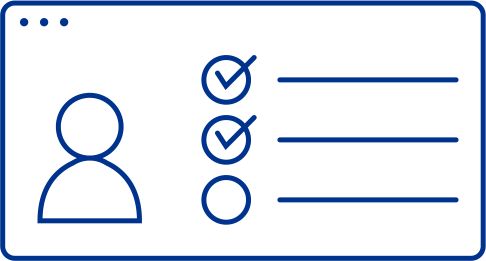The modern workplace is a lively mix of generations, each with its own unique set of values, work styles, needs, and expectations. Add to that, the cultural diversity that global talent mobility has brought about and the spread of hybrid work models, and the workplace sometimes feels like the "Tower of Babel". As an Executive Coach, I have worked with numerous leaders who feel perplexed on finding a common language across ages within their teams, manage friction, and harvest the breadth of talent and potential that such diversity brings.
So, where should one begin? Let us first delve into the differences in mindset and life values that generations bring to the workplace.
Understanding Generational Differences

Baby Boomers (1946–1964)
They are known for their dedication, loyalty, and preference for structure. Having grown up with traditional hierarchies, they value face-to-face interaction and stability. As they near retirement, they often want to leave a meaningful legacy, mentoring younger colleagues.

Generation X (1965–1980)
The "bridge" generation—independent, pragmatic, and all about work-life balance. Having seen both economic booms and busts, they tend to be sceptical of authority and crave flexibility and autonomy in how they work.

Millennials (1981–1996)
This tech-savvy group is driven by purpose and collaboration. They thrive on feedback, flexibility, and meaningful work, with a desire to make an impact on both the workplace and the world.

Generation Z (1997–2012)
Growing up in the age of smartphones and social media, Gen Z is adaptable, innovation-driven, and financially focused. They are always on the lookout for learning opportunities and crave financial stability alongside purpose.

Alpha Generation (2010–2025)
Just entering the workplace, they are expected to leverage their innate technological fluency, and seamlessly integrate AI and digital tools to enhance productivity. They will likely value flexibility, purpose-driven work, and collaboration in highly interconnected environments.
Evidently, human polyphony, this interesting and diverse mix of values, styles, and expectations, comes before all, with clashes and friction. Here are some of the most common differences.
Common Differences
Work Ethic
Older generations often see long hours and in-person work as a sign of dedication, while younger generations prioritise flexibility and well-being, which can sometimes be perceived as "less committed."
Leadership Preferences
Older generations tend to favour hierarchical structures and directive leadership. As generations become younger and younger, the need for flat hierarchy, open communication, a teamwork-focused culture, and having a voice increases.
Technology
Younger employees adapt to new technologies rapidly and expect the workplace to be tech-forward and agile, while older generations may feel overwhelmed by technological changes, digital tools, and the constant need to upskill.
Perspective on Change
Older generations tend to view change more cautiously. This is not to say that they resist it, but more that they remain pragmatic and can think of its risk and impact. Younger generations seem highly adaptable and prefer fast paced action, at times jumping onto change for the sake of it.
Emotional Regulation and Social Skills
Older generations seem to have developed more of a relational capacity, both towards self (resilience, frustration tolerance, stress management, confidence, and patience) and towards others (communication, conflict management, negotiation, and networking) than younger ones, which is of course a direct result of the wisdom and maturity that comes with age, but also of the fact that they have lived and worked at times with no digital shortcuts. Younger employees, while adaptable, sometimes lack these deeper relational skills, due to heavy reliance on technology.
Communication Styles
Boomers and Gen Xers tend to lean towards phone calls and emails, while Millennials and Gen Z prefer instant messaging and quick digital communication. Younger generations can struggle with formal writing or in-person conversations, having grown up in a world where digital communication reigns supreme, and technology plays a core role in regulating proximity or distance in relationships. Overall, younger generations seem to find it difficult to engage in relationship management without the safety net technology offers.
Finding Opportunity in Chaos
The key to bridging the generational gap, along with all other gaps at work and in society, is connection. We are neurologically wired to connect on a human-to-human level. Where relationships thrive, fear, failure, or discrimination fade, leaving room for creativity and collaboration. Like social experiments where seniors and children share time together, resulting in increased learning and wellbeing, workplaces thrive when people of all ages are encouraged to mingle and collectively contribute. Building those connections among generations reduces tension, boosts empathy, and fosters an environment of learning and collaboration.
What can connection do for the workplace? Here are some major opportunities:
When we connect as human-to-human, identifiers such as our age, sex, race, or culture, become increasingly unimportant, compared to our shared hopes, desires and struggles, our shared humanity, that is to say.
A real-life example:
During a team retreat for a client we facilitated last month, two colleagues—one a young intern from a tech-savvy background, and the other a senior manager nearing retirement—bonded over their shared love for photography. Despite their differences in age and experience, their conversation about capturing meaningful moments bridged the gap, highlighting their shared humanity over their distinctions.
Coming together bolsters diversity of thought and perspective, with each generation bringing its own experiences and approaches to problem-solving, enabling collective wisdom, and creative decision-making.
A real-life example:
During a culture transformation project for a client, a junior team member proposed leveraging social media-style videos to communicate the initiative internally, while a senior colleague contributed insights on aligning the messaging with the organisation’s legacy values. Their combined perspectives created a communication plan that was both innovative and deeply respectful of the company’s culture, ensuring broader employee engagement.
Through learning together, we grow. Younger generations are masters in adaptation, the fast pace of work, and using technology to achieve more. They are also more passionate, driven, and purposeful, and have a fresh perspective on life. Older generations, on the other hand, have learned to stop and think, and understand the context, before jumping to solutions. They are also better with emotional regulation and building strong relationships, have a true desire to pass on what they know, and leave their legacy for the ones to come. Combined, a multigenerational workforce is often more resilient, diverse and agile, and better equipped to navigate change and uncertainty.
A real-life example:
Alex, a senior director and a rather traditional leader, entered our first coaching session feeling frustrated and disillusioned. He could not understand why his team of younger professionals seemed disengaged and was convinced they lacked the passion and commitment he expected. The tension in their relationship was palpable, with Alex blaming the younger generation for what he saw as a ‘decline in work ethic and drive’. However, as the coaching progressed, it became clear that no matter what he tried, the results remained the same. Eventually, Alex agreed to facilitate a guided discussion with his team to explore what they truly needed to thrive.
During the conversation, the team opened up about feeling micromanaged, expressing how it drained their initiative and enthusiasm. One team member bluntly said, “There’s only your way around here.” They spoke about their desire for more autonomy and control over their work, suggesting regular check-ins focused on outcomes. This moment was a turning point for Alex. He realised that his approach, shaped by the leadership styles of the past, needed to evolve. He had to meet his team where they were, not where he was.
Through the coaching process, Alex gradually shifted his mindset, working on building trust and giving his team the autonomy they had longed for. Although challenging at first, this transformation sparked a renewed sense of accountability, a boost in morale, and a significant improvement in team performance. What began as a struggle, became a powerful opportunity for growth, not just for Alex, but for the entire team.
So, where do you go from here? Here are some ways to foster connection among different age groups in the workplace:

How Leaders Can Foster Connection

Allow employees to choose work setups that suit their personal needs and lifestyles, whether this be remote work or flexible hours.

Create spaces for dialogue across generations, to find shared values and build mutual understanding.

Celebrate the unique contributions everyone brings to the table and the deeper understanding that we cannot afford to exclude anyone from the discussion.

Encourage younger employees to help older ones with tech and trends, while older employees share their wisdom in strategy, leadership, and emotional intelligence.

Ensure teams are a mix of ages, allowing natural collaboration and knowledge-sharing that plays to each person’s strengths.

Create a culture where continuous growth and learning are valued across all age groups.

Showcase the behaviours you want to see—whether this be curiosity, empathy, or resilience. Your actions will speak louder than words in creating an inclusive and connected environment.
By encouraging connection and mutual learning, leaders can turn the challenges of a multigenerational workforce into an advantage, creating a vibrant, resilient, and diverse workplace where people of all ages can thrive together.
I’m not telling you it’s going to be easy; I’m telling you it’s going to be worth it!
If you have any questions or are seeking personalised guidance for your organisation's success, please do reach out to us below or contact Ariadne Lada directly at ariadnelada@kpmg.com.mt.


